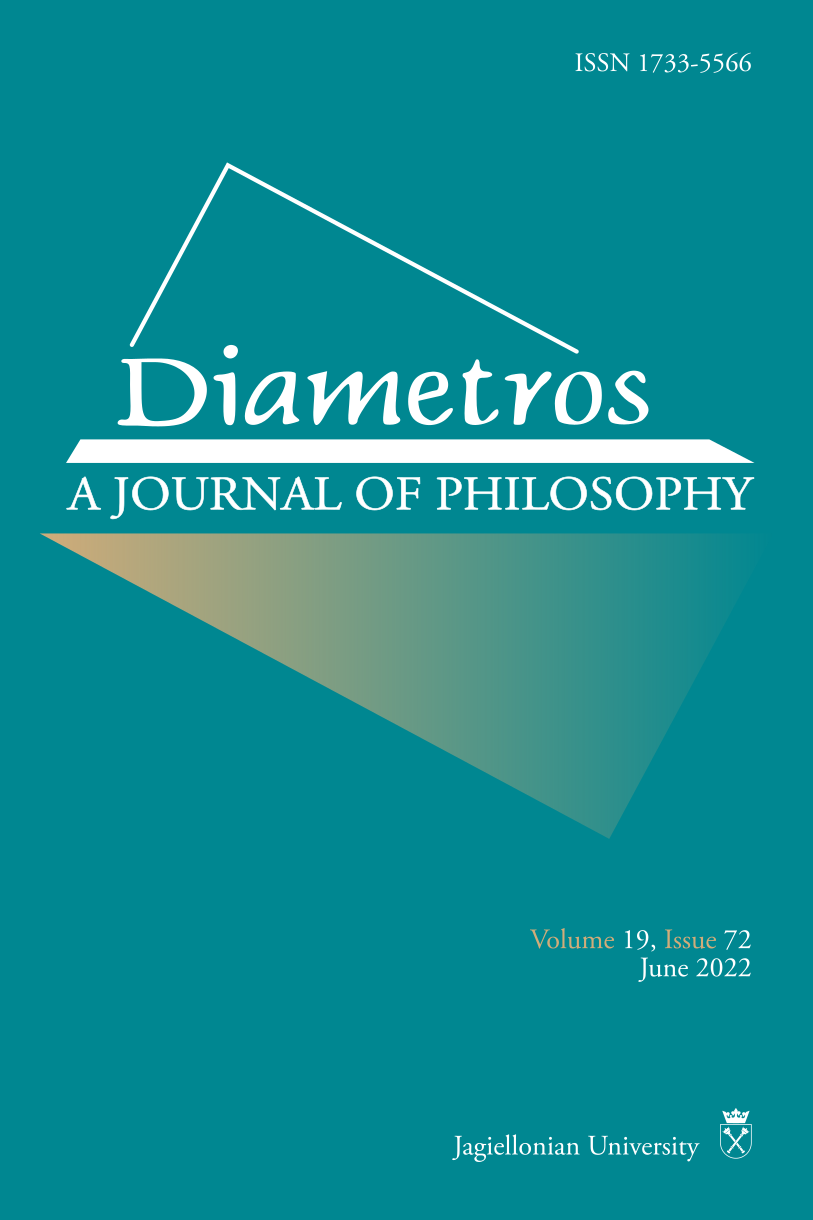The Hideout, the Underground, and Avoidance of Non-Being: Tischner, Dostoevsky and Tillich on Personality Disorders
Main Article Content
Abstract
An attempt is made to develop a basic framework for an existential-phenomenological perspective on personality disorders. Its starting point is taken from the psychiatrist Antoni Kępiński and the philosopher Józef Tischner. The former provides a clinical framework capacious enough to allow ethical, existential, and phenomenological explorations. This conceptual “space” is then explicitly recognized, addressed, and fulfilled by the latter’s investigation of personality dynamics proper to “the hideout.” In order to supplement this thread of thought with a specific illustration, a “case” provided by Fyodor Dostoevsky in his Notes from the Underground is investigated. Then, in turn, Paul Tillich’s The Courage to Be is referred to, so that the deepest roots of personality disorders can be identified with an ontological dynamic proper to the avoidance of non-being. Finally, some brief remarks are made concerning how all the above relates to the idea of a normatively neutral science and how it can be integrated with more up to date clinical practice.
Article Details

This work is licensed under a Creative Commons Attribution-NonCommercial 4.0 International License.
By submitting his/her work to the Editorial Board, the author accepts, upon having his/her text recommended for publication, that Diametros applies the Attribution 4.0 International (CC BY 4.0) license to the works we publish. Under this license, authors agree to make articles legally available for reuse, without permission or fees. Anyone may read, download, copy, print, distribute or reuse these articles without asking prior permission from the publisher or the author, as long as the author and original source are properly cited. The author holds the copyright without any other restrictions. Full information about CC-BY: https://creativecommons.org/licenses/by/4.0/legalcode.
How to Cite
References
Allport G.W. (1921), “Personality and Character,” Psychological Bulletin 18 (9): 441–455.
Allport G.W. (1927), “Concepts of Trait and Personality,” Psychological Bulletin 24 (5): 284–293.
American Psychiatric Association (APA) (2013), Diagnostic and Statistical Manual of Mental Disorders, 5th ed., American Psychiatric Association, Washington, London.
APA Presidential Task Force on Evidence-Based Practice (2006), “Evidence-Based Practice in Psychology,” The American Psychologist 61 (4): 271–285.
Cleckley H. (1941), The Mask of Sanity: An Attempt to Reinterpret the So-Called Psychopathic Personality, Mosby, St. Louis.
Charland L.C. (2008), “A Moral Line in the Sand: Alexander Crichton and Philippe Pinel on the Psychopathology of the Passions,” [in:] Fact and Value in Emotion, L.C. Charland, P. Zachar (eds.), John Benjamin Press, Amsterdam: 15–35.
Dostoevsky F. (1864/1992), Notes from the Underground, Dover Publications, Mineola, NY.
Engel G.L. (1977), “The Need for a New Medical Model: A Challenge for Biomedicine,” Science 196 (4286): 129–136.
Epstein M. (2013), Thoughts Without a Thinker: Psychotherapy from a Buddhist Perspective, Basic Books, New York.
Fonagy P., Adshead G. (2012), “How Mentalisation Changes the Mind,” Advances in Psychiatric Treatment 18 (5): 353–362.
Frankl V.E. (2014), The Will to Meaning: Foundations and Applications of Logotherapy, Penguin, New York.
Gipps R.G.T. (2021), “The Narcissism of the Private Linguist,” [in:] Cora Diamond on Ethics, M. Balaska (ed.), Palgrave Macmillan, London: 223–245.
Hall C.S., Lindzey G., Campbell J.B. (1998), Theories of Personality, John Wiley & Sons, New York.
Hayes S.C., Strosahl K.D., Wilson K.G. (2011), Acceptance and Commitment Therapy: The Process and Practice of Mindful Change, Guilford Press, New York.
Jaspers K. (1997), General Psychopathology, vol. 2, John Hopkins University Press, Baltimore.
Kępiński A. (1968/2005), Refleksje oświęcimskie, Wydawnictwo Literackie, Kraków.
Kępiński A. (1972), Schizofrenia, PZWL, Warszawa.
Kępiński A. (1974), Melancholia, PZWL, Warszawa.
Kępiński A. (1977a), Lęk, PZWL, Warszawa.
Kępiński A. (1977b), Psychopatie, PZWL, Warszawa.
Kępiński A. (1978), Poznanie chorego, PZWL, Warszawa.
Kretschmer E. (1944), Körperbau und Character, Springer, Berlin.
McWilliams N. (2011), Psychoanalytic Diagnosis: Understanding Personality Structure in the Clinical Process, Guilford Press, New York.
Millon T., Grossman, S., Millon, C., Meagher, S., Ramnath, R. (2012). Personality Disorders in Modern Life, John Wiley & Sons, Hoboken.
Putnam H. (2002), The Collapse of the Fact/Value Dichotomy and Other Essays, Harvard University Press, Cambridge, MA.
Reich W. (1933/1972), Character Analysis, Farrar, Straus and Giroux, New York.
Ryn Z. (1990), “The Evolution of Mental Disturbances in the Concentration Camp Syndrome (KZ-Syndrom),” Genetic, Social, and General Psychology Monographs 116 (1): 23–38.
Schneider K. (1923/1958), Psychopathic Personalities, Cassel, London.
Tillich P. (1962), The Courage to Be, Collins, London.
Tischner J. (1978/2011), “Ludzie z kryjówek,” [in:] J. Tischner, Myślenie według wartości, Wydawnictwo Znak, Kraków: 454–469.
Tyrer P. (2018), Taming the Beast Within: Shredding the Stereotypes of Personality Disorder, Sheldon Press, London.
Waring D.R. (2012), “The Virtuous Patient: Psychotherapy and the Cultivation of Character,” Philosophy, Psychiatry, & Psychology 19 (1): 25–35.
Wilson G.T., O’Leary K.D. (1980), Principles of Behavior Therapy, Prentice Hall, Englewood Cliffs.
Woolfolk R.L. (2015), The Value of Psychotherapy: The Talking Cure in an Age of Clinical Science, Guilford Publications, New York.
Yalom I.D. (1998), The Yalom Reader: Selections from the Work of a Master Therapist and Storyteller, Basic Books, New York.
Zachar P., Potter N.N. (2010), “Personality Disorders: Moral or Medical Kinds – or Both?,” Philosophy, Psychiatry, & Psychology 17 (2): 101–117.




